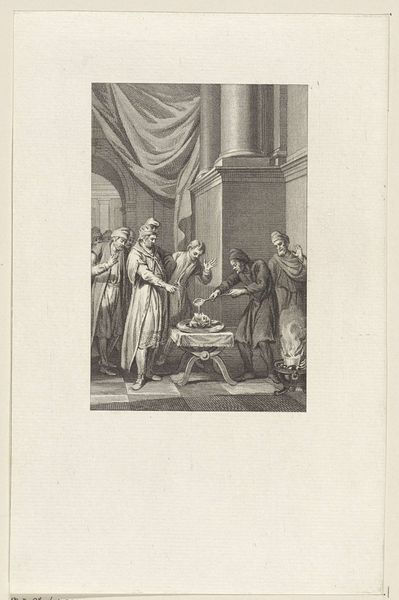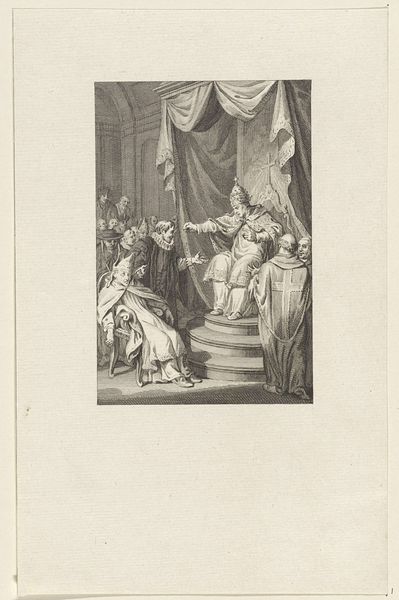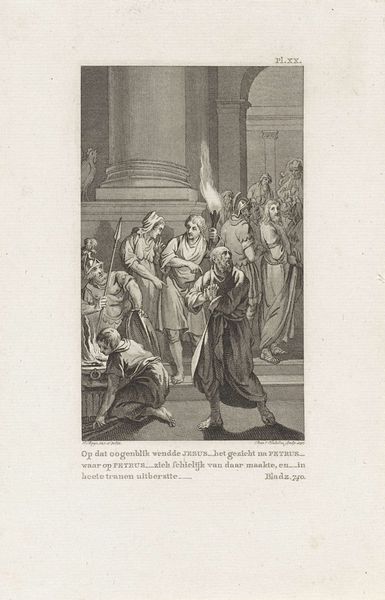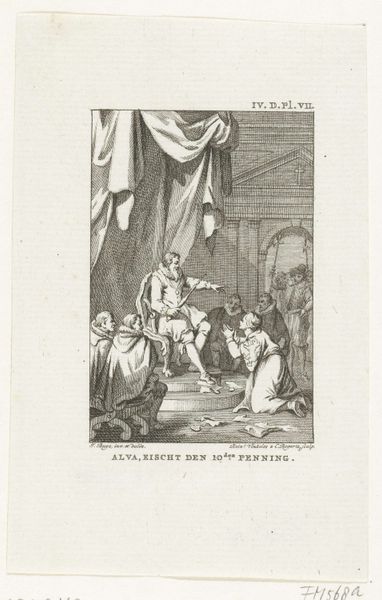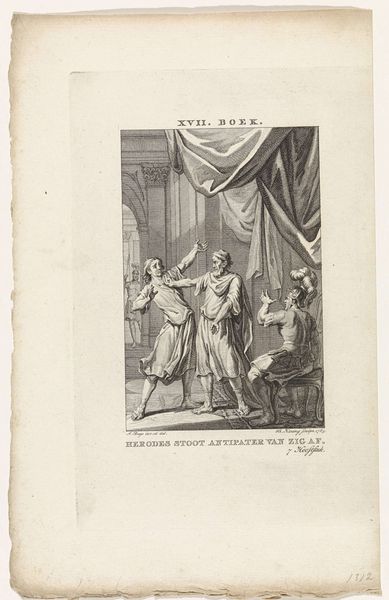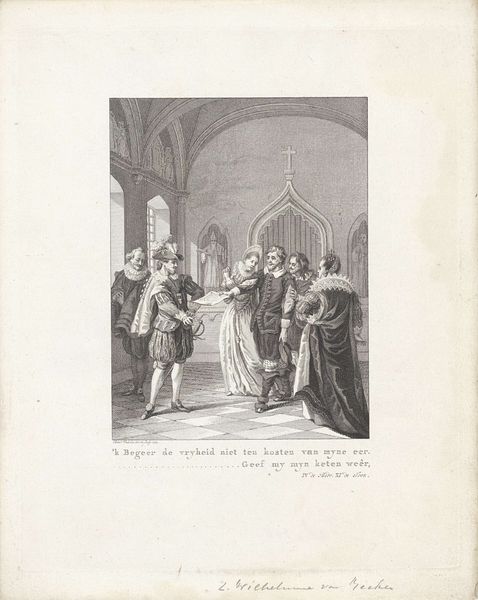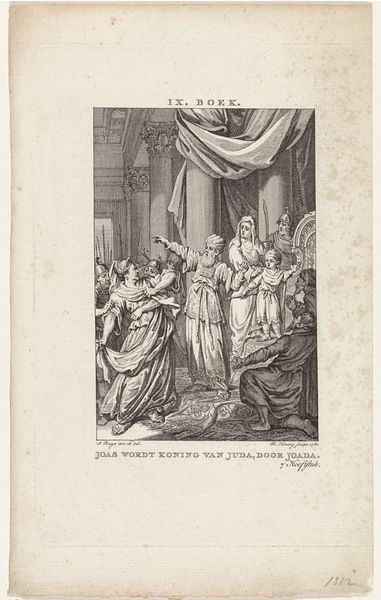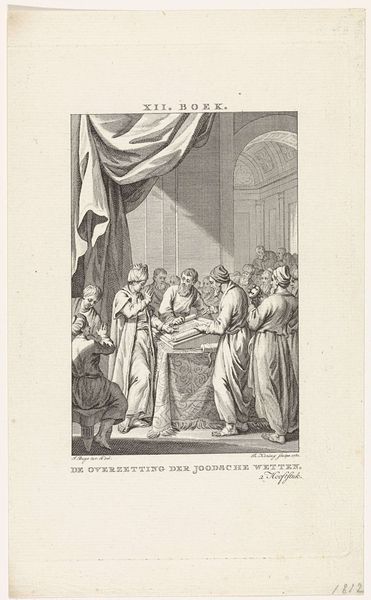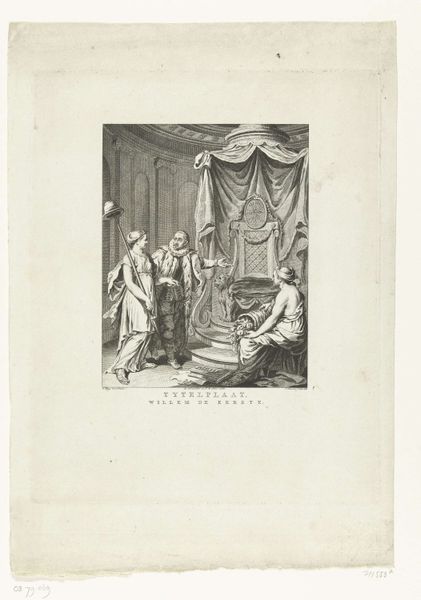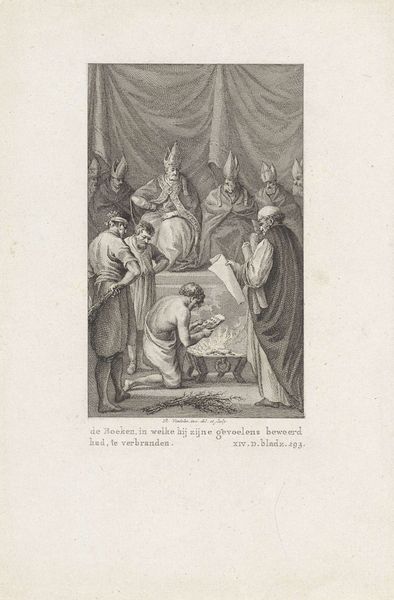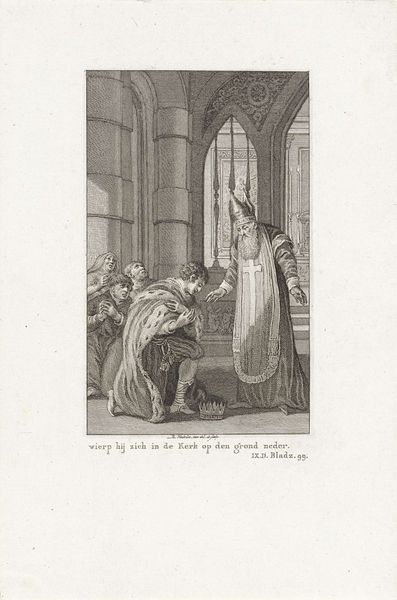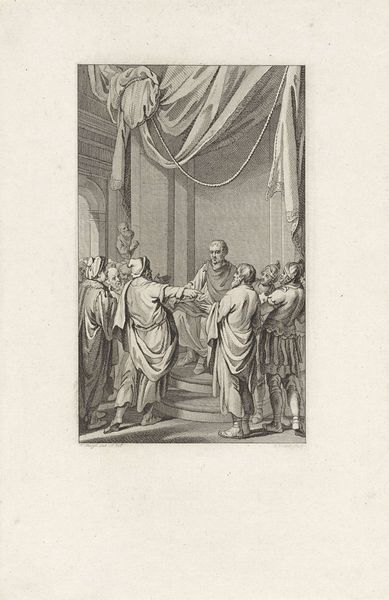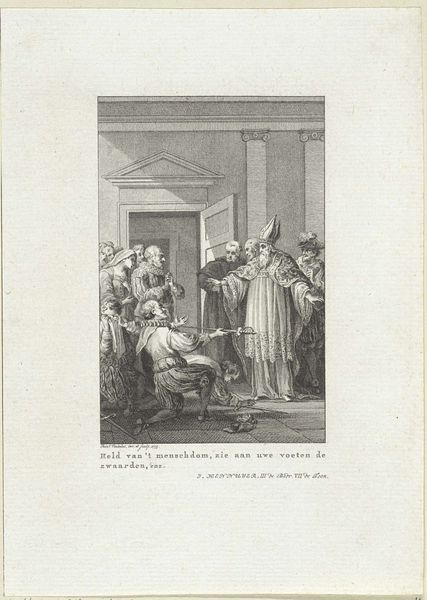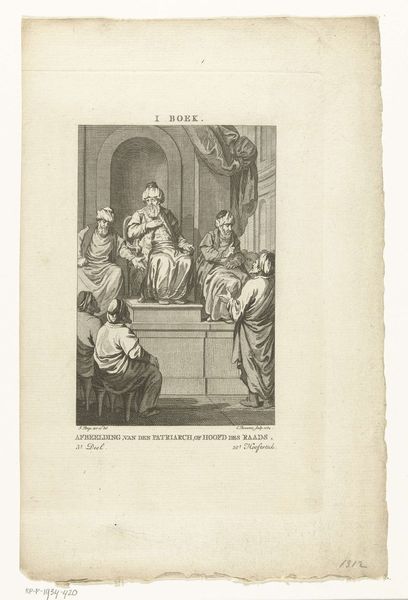
#
pencil drawn
#
aged paper
#
light pencil work
#
photo restoration
#
pencil sketch
#
old engraving style
#
archive photography
#
personal sketchbook
#
old-timey
#
pencil work
Dimensions: height 234 mm, width 154 mm
Copyright: Rijks Museum: Open Domain
Curator: Let's take a look at this piece. We have here "David Plays the Harp Before Saul," crafted in 1797 by Reinier Vinkeles, presently residing in the Rijksmuseum's collection. Editor: My initial impression is one of quiet drama. The composition, while classically staged, feels intimate. The light pencil work really adds to the vulnerability on display. Curator: Indeed. Vinkeles's masterful rendering certainly emphasizes the emotional tenor of the scene. Think about the social dynamic being portrayed here: the powerful king Saul, soothed, if only temporarily, by David's music. It speaks volumes about the socio-political climate of the time. What did it *mean* to portray a king in such a state? Editor: And don't overlook the medium. It's a print, right? Consider the labour involved in creating those fine lines, the reproductive possibilities and broader accessibility of prints within the artistic landscape of the late 18th century. It wasn't about unique artistry but repeatable dissemination to broader markets. Curator: Exactly. Prints made imagery much more democratized. And the very choice of this particular scene from the Bible is important to consider. Kingship, prophecy, divine right... these are all incredibly charged subjects in a period of revolutionary fervor across Europe. What do you make of the other figures looking on, framing the scene? Editor: They are positioned to convey different modes of response: stoic observance, perhaps concern, one even looks to be issuing demands or directions. They amplify Saul's fraught emotional state as he battles his inner turmoil and challenges to his power. We only see reactions and implications. Curator: It also shows you the political symbolism. This narrative explores tensions surrounding authority, divine favor, and the very nature of leadership itself. I find it interesting how readily this biblical story served as a visual platform to debate power relations within European society, with people often projecting into its image. Editor: I agree. By investigating printmaking practice of that era, looking at its material output in both subject and medium, can really ground our perspective on the artwork and how it served. Curator: Precisely. Examining this artwork with you highlights its engagement with complex questions regarding cultural representation, socio-political symbolism, and the very nature of power. Editor: I am particularly struck by this engraving being on the page with written script, allowing me to wonder whether we’re not invited to make music as an art form the vehicle for higher divine reason in political turmoil.
Comments
No comments
Be the first to comment and join the conversation on the ultimate creative platform.
